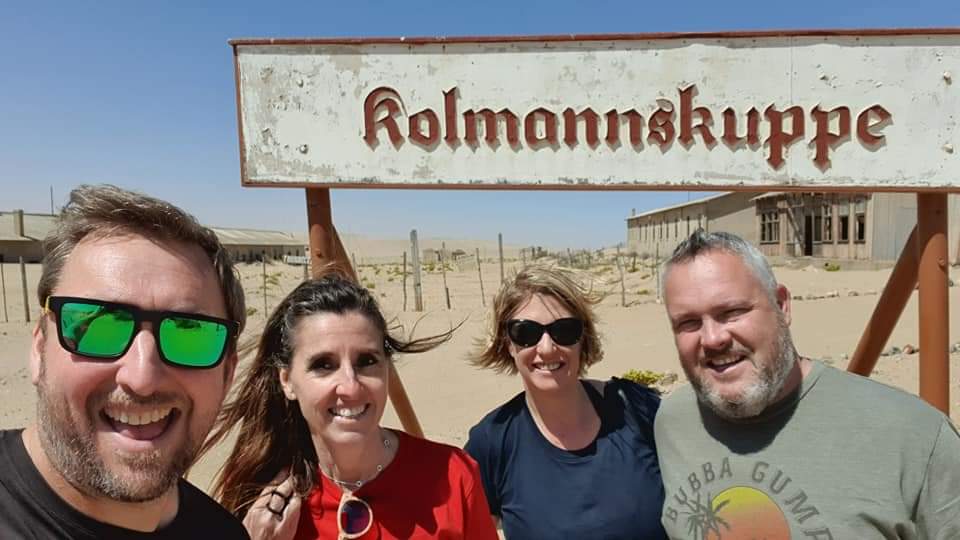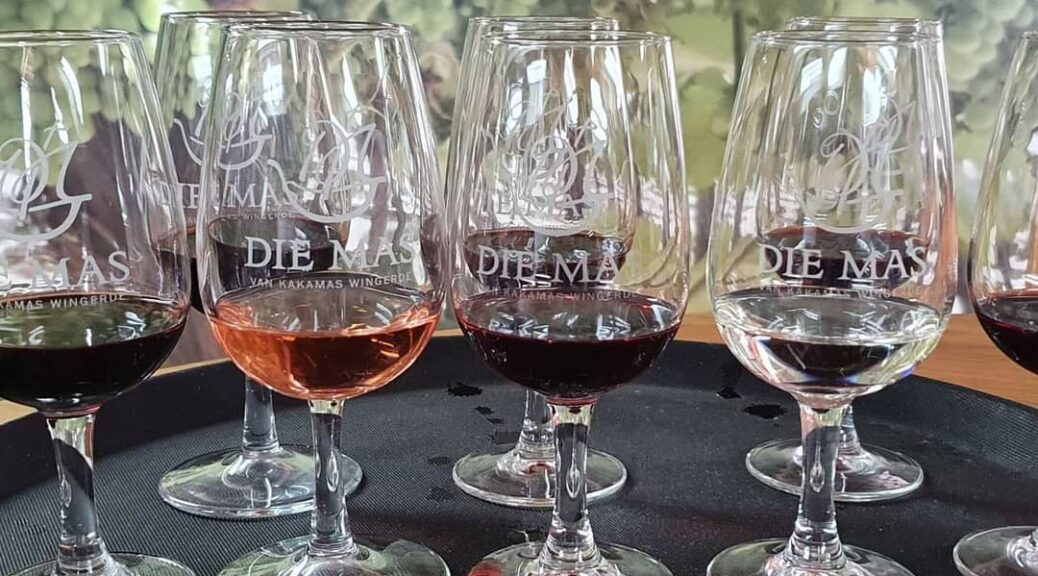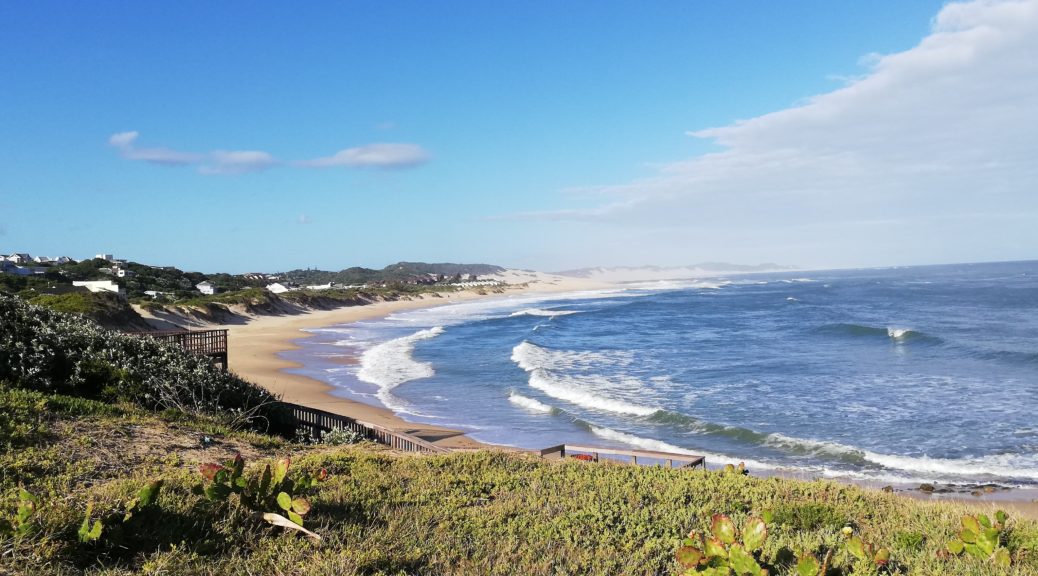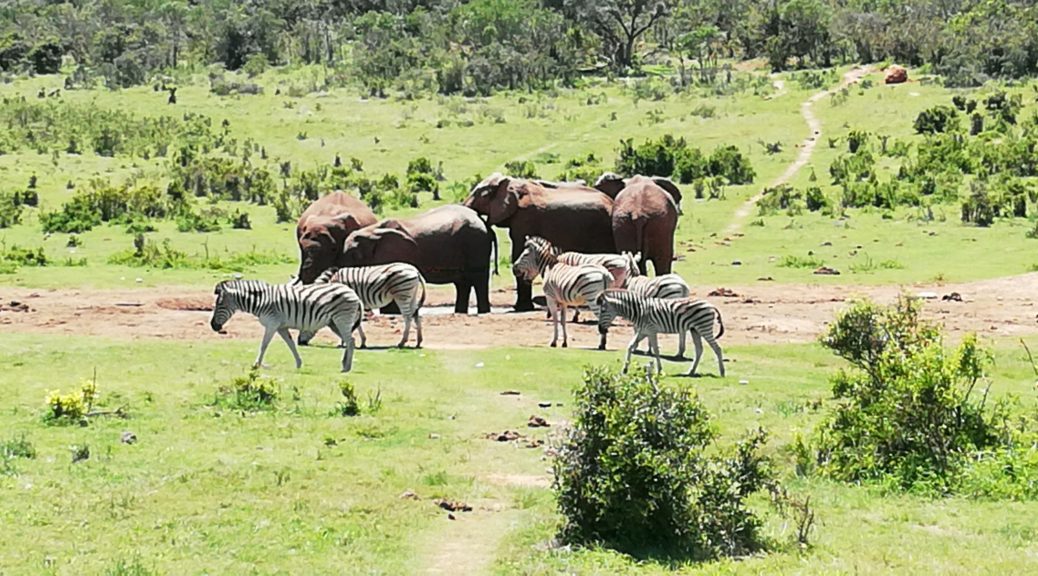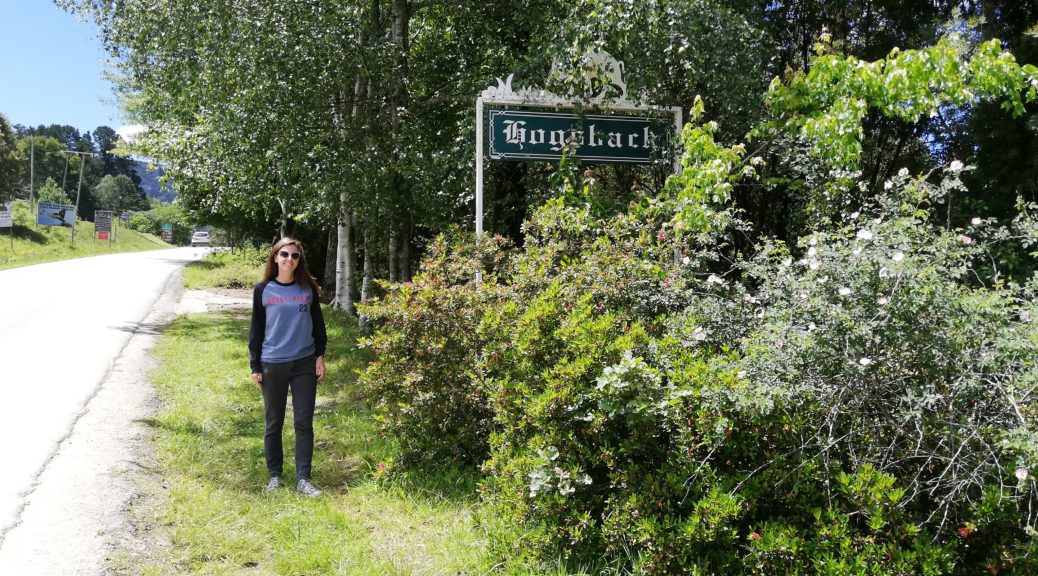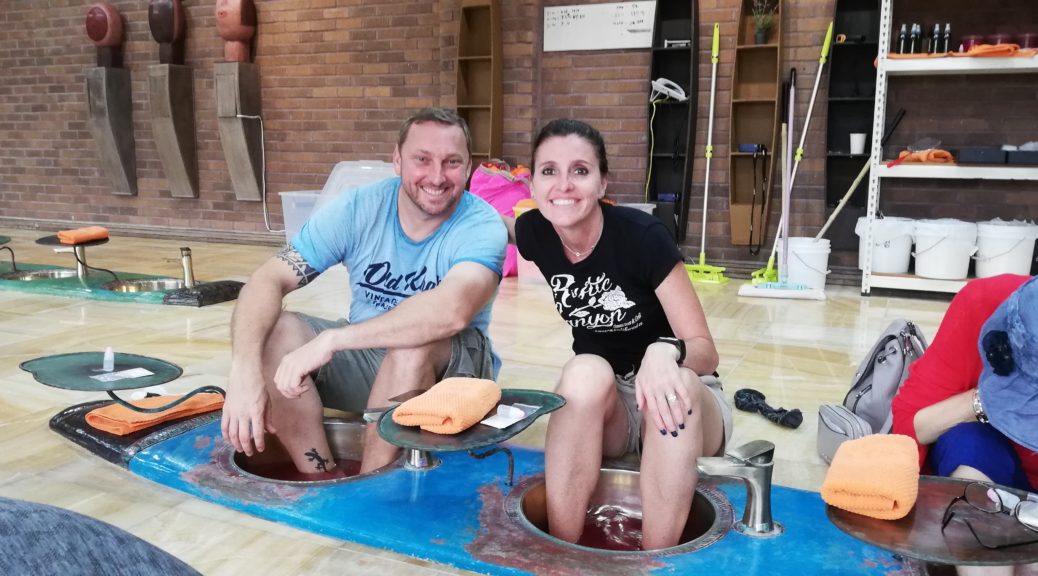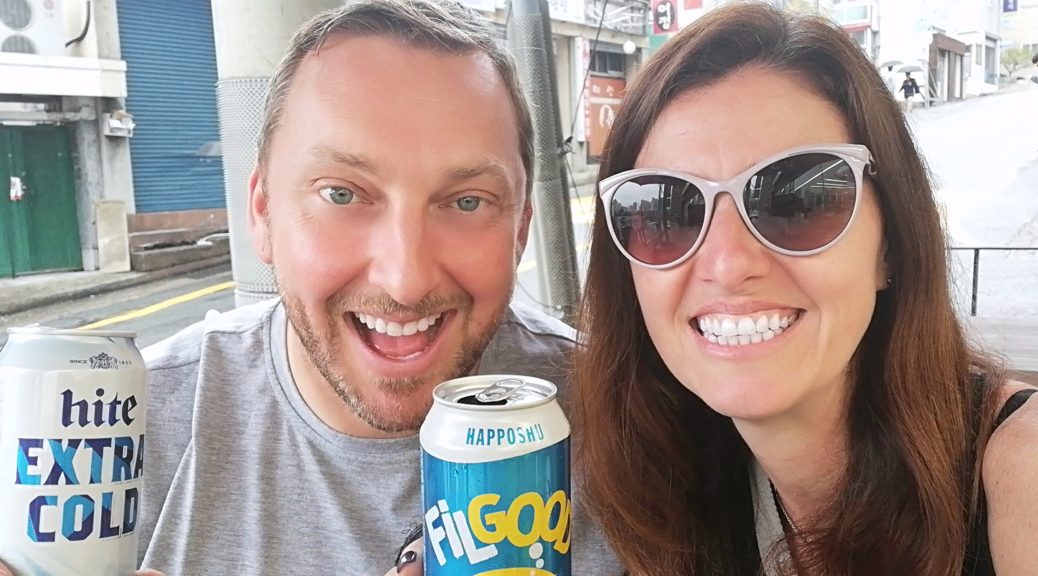LUDERITZ
24-25 September 2021
A Namibian trip had been on the cards for years; deprioritised for the very many other adventures that had swallowed up all the not-enough leave days.
Having robbed us of a planned trip to Lesotho in July with our friends Michele & Ian, finally the pandemic provided the perfect window of opportunity for a cross-border flit, between a brutal winter 3rd Covid Wave and any hope of travel abroad opening up again while South Africa was on the Red List.
Highly motivated, Christian took it upon himself to sketch a magnificent roadtrip for our Awesome Foursome that would include desert, sea, mountains, bush and city breaks all wrapped up in a 10 day whirlwind tour. With the magnitude of expansive Namibia, it was going to be a lot of driving. But with good company and lots of exciting excursions ahead, we jumped at the chance!
We booked our flights; holding our breath that the Covid infection numbers would stabilise and the borders remain open. When things looked promising, we booked all the accommodation and the rental car and that was it, the (impatient) countdown began.
You could tell we were hot to trot because we’d booked the red-eye flights out to make the most of our first day of holiday. This meant leaving home at 03h30 for the airport – and a very long hour’s wait between check-in and boarding, in an eerily quiet airport, with “closed until further notice” signs in the Lounge windows.
The flight was uneventful (no doubt thanks to the ridiculous hour and the smattering of passengers sleeping off the early start) and we were soon disembarking the little plane, on the runway in what looked like the middle of nowhere. No city to be seen in any direction; just dry brown semi-desert. How awesome.
We got our rental – a big double-cab Hilux that would see us through even the most rugged parts of our route – and hit the road, with an ambitious 500km of open road standing between us and lunch in Keetmanshoop.
Heading South, the miles sped by on well-maintained roads with little traffic. And not much to see bar the same dry barren veld on either side of the road.
Needing to break the journey, we randomly settled on Kalkrand as a roadside dot on the map. It proved to be little more than that when the reality presented itself; dry, closed petrol pumps, a dodgy pub, a rip-off tuckshop and public toilets at N$2 per person for the pleasure (loosely-termed, with no toilet seats or cisterns and toilet paper rations allocated on upfront cash payment – with exact monies required or no change issued).
Back in the car with massively overpriced water and chips, not 10 minutes later we drove through Namibia’s version of the Harrismith one-stop. Would have been far better suited to our intentions. Typical!
By 2 o’clock we reached Keetmanshoop, which was the town at the crossroads at which our southerly journey turned west towards the coast. It proved to be an awkward time to get lunch, with several places already concluded their lunch sitting and only reopening for dinner at 5.
Determined not to do a fast food chain lunch, we found the Bird’s Nest Hotel was open, and happy to serve us in their courtyard terrace. We ordered wraps and had our first Windhoek draught to celebrate our arrival in Namibia.
Far from done with driving for the day, we were back in the car by 15h30 with another 330km yet to do to get to Luderitz.
The terrain gradually metamorphosed from the dry veld generously dotted with brown shrubs, to rocky landscape and then to the sandy desert we had been expecting all along. Not an ideal drive to be playing I Spy, with so little stimulus!
We were very pleased when we eventually got our first glimpse of the shimmering Atlantic. Even though it was just gone 18h30, it was still light and we got to enjoy spectacular views from our digs for the next two nights; sea-facing suites in an Airbnb on the Shark Island peninsula that jutted out into the ocean from the base of town.
Luderitz was a sweet and compact little town so nothing was very far from our homebase. We decided to get moving to catch the last of the sunset at the Luderitz Yacht Club, a few hundred metres away at the waterfront, obviously.
The barman served us ice-cold Windhoek draught in ice-cold beer mugs and we celebrated our arrival before heading off to The Portuguese Fisherman, which our host had recommended to us for dinner. We saw why, with a magnificent meal of fresh seafood plucked straight off the local coastline.
Curfew and the long day curtailed any further shenanigans and we were pleased to get an earlyish night to recharge the batteries.
We had driven past Kolmanskop on our way into Luderitz and had a sneak peek of the famous Ghost Town, which was #1 on our To Do list. A few inquiries revealed that there were guided tours at 09h30 and 11h00, so we chose the latter to allow for a breakfast in the restaurant in the Ghost Town beforehand.
The tour was brilliant. Our guide set the scene with the story of Luderitz, named after a tobacco dealer from Bremen. Looking for copper, he had completely overlooked the diamonds that existed in abundance just down the drag. Over 5 million carats were mined in Kolmanskop; 90% gem quality diamonds (10% industrial) compared with 60/40 in Kimberley.
Although even that was relatively short-lived when 1927 saw the start of the death of Kolmanskop when bigger diamonds were found on the other side of the Orange River so all the people and equipment went there. There was mass exodus from the town which eventually died completely when the hospital closed in 1956.
Kolmanskop was an open air museum, where visitors are guided through the existing buildings to get the history and anecdotes, and then are free to wander at will in and out of the houses and businesses of the deserted town.
The tour began in the Town Hall, which sounded pretty lush for this weird man-made oasis in the Namib, at the turn of the last century. The Hall had a champagne lounge for the ladies, a smoking and poker room for the men, with a restaurant that had bell strings suspended from the ceiling and over the tables such that each could command personalised service from the kitchen, where you can still see the original stoves that prepared hundred of meals a day. It also had gym equipment and housed the first library in southern Africa. Below was the bowling alley – complete with still-operational mechanism to return the ball from the skittles end to the start of the lane! – with the original bar and bar-fridge still in place.
The Hall was on Kaizer Wilhelm Street (Millionaire’s Row), where you were still able to walk through many of the buildings, including the architect’s house, the Quartermaster’s house that also acted as B&B for the VIP guests and international artists who came to put on shows on the stage in the Town Hall.
Our guide told us that the houses were very advanced for their time. There were seawater taps in the houses. Fresh drinking water was imported from Cape Town in barrels, by the thousands of kilolitres! There was even a seawater swimming pool with diving board.
The hospital was also very advanced for its time and could bed 250 people at a time – which seems like a lot since there were only 300 German adults, 44 children and 800 Namibian workers living in Kolmanskop – and first Xray machine in Southern Africa, which was an essential not for health purposes, but rather to detect diamond-smuggling. There was also a wine cellar below because the Head Doctor believed all patients should have a glass of wine every day.
Even though the town was established in 1911, every house had a telephone and electricity. There was an ice factory that used sea water tanks, ammonia gas and electricity to freeze in about 24 hours. Complimentary frozen blocks were delivered to everyone each day to put into their cold cupboard to keep their food cold, along with a crate of lemonade and soda water; all delivered by mule-drawn taxi.
One of the colourful anecdotes shared was in the butchery, where the story goes that the menfolk would get hammered in the bowling alley bar, get into trouble with their wives and then break into the butchery to steal all the sausages when their wives refused them dinner. The butcher would then consult the barman to see who had been at the alley and consequently send them a bill for their haul. Sounds like a fun caper – and like a reasonably good existence in general, bar the actual living in the remoteness of the desert and the punishing windiness.
We suspected the excursion was going to be the highlight of our tour. A great start that was going to be hard to beat!
Still full from the sumptuous breakfast, we skipped lunch in favour of a drive around the Peninsular that we could see across the bay from our deck. Our hosts had put together a printed album of the highlights of Luderitz so we knew to expect a 60km loop with several bays and lookout points.
We picked the more interesting ones; Diaz Point (for the cross placed there by Bartholomew Diaz in 1488) and Halifax Bay for views of the Penguins on Halifax Island and the grave of George Pond of London, who had been outcast from Luderitz and walked to Halifax Bay to reach his only friend on the island, but died of hunger and thirst waiting for the low tide so he could get across. It was, as we suspected commonplace, blowing a gale, so George probably had quite a miserable end of days, poor chap.
Very pleased with our day’s achievements so far, we took a time out at a pizza bar in town called Ritzi’s to grab a cold beer before our walking tour of town. With everything so close together, we figured there was no rush.
Good thing too, because the 2 sights we’d earmarked in town turned out to be literally a couple of hundred metres apart. It was a 20 minute affair to see the famous Lutheran church with its spectacular views and original stained glass windows and Goerke Haus, which was built on Diamond Hill by the richest man in town for his lady, for her arrival from Germany. No expense was spared and he built a fabulous mansion, with everything fully imported from Germany. All for nought though; she got to Luderitz and couldn’t abide the wind so left him and went straight back to Germany.
To be fair, it really is a windy town. But we still enjoyed the view from our relatively sheltered deck as we recounted the many highlights of the day, so this Mrs Goerke might have been a bit hasty.
We closed off our time in Luderitz with sundowners at a fun local pub in town called Bottles, dinner at Essenweitz at the Waterfront and then star-gazed from our deck, thanks to the clear skies and carpet of bright stars that seemed so much closer than at home.
